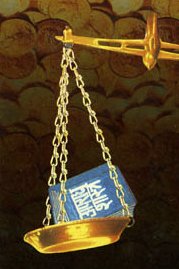Tantrapala, Tantrapāla, Tamtrapala: 3 definitions
Introduction:
Tantrapala means something in Hinduism, Sanskrit, the history of ancient India. If you want to know the exact meaning, history, etymology or English translation of this term then check out the descriptions on this page. Add your comment or reference to a book if you want to contribute to this summary article.
In Hinduism
Arthashastra (politics and welfare)
Source: Shodhganga: Kakati Ganapatideva and his times (artha)Tantrapāla (तन्त्रपाल) is an Important officer of the king. He can be defined in many ways. He might be the chief of the army, an officer incharge of administration or he might be an officer incharge of the king’s body guard—royal retinue, Prolrautu was the tantrapāla and gajasāhiṇi of Gaṇapatideva.

Arthashastra (अर्थशास्त्र, arthaśāstra) literature concerns itself with the teachings (shastra) of economic prosperity (artha) statecraft, politics and military tactics. The term arthashastra refers to both the name of these scientific teachings, as well as the name of a Sanskrit work included in such literature. This book was written (3rd century BCE) by by Kautilya, who flourished in the 4th century BCE.
India history and geography
Source: Cologne Digital Sanskrit Dictionaries: Indian Epigraphical GlossaryTantrapāla.—(SITI), chief of the army. (IE 8-3; EI 33), probably, officer in charge of adminis- tration; cf. Mahātantra-adhyakṣa, Sarva-tantra-adhikṛta, Tantra- pati and Mahātantra-adhikṛta, etc. (HD), an officer like the Charge4-d' Affaires, according to some; cf. Tantrapāla-Mahāsāmanta-Mahādaṇḍanāyaka (Ep. Ind., Vol. XIV, p. 185; cf. Vol. V, p. 77). (Hyderabad Archaeological Series, No. 18, p. 34), explained as ‘an officer of the king's bodyguard or royal retinue.’ (Ep. Ind., Vol. XV, p. 77), explained as ‘a councillor.’ (SII 11-2), cf. Tantrapālaradhiṣṭhāyaka; also Tantra- pāladadhiṣṭhāyaka (A. R. Ep., 1958-59, p. 12). Note: tantrapāla is defined in the “Indian epigraphical glossary” as it can be found on ancient inscriptions commonly written in Sanskrit, Prakrit or Dravidian languages.

The history of India traces the identification of countries, villages, towns and other regions of India, as well as mythology, zoology, royal dynasties, rulers, tribes, local festivities and traditions and regional languages. Ancient India enjoyed religious freedom and encourages the path of Dharma, a concept common to Buddhism, Hinduism, and Jainism.
Languages of India and abroad
Kannada-English dictionary
Source: Alar: Kannada-English corpusTaṃtrapāla (ತಂತ್ರಪಾಲ):—
1) [noun] a man who commands, directs an army; a commander.
2) [noun] a keeper of secrets.
--- OR ---
Taṃtrapāḷa (ತಂತ್ರಪಾಳ):—[noun] = ತಂತ್ರಪಾಲ [tamtrapala].
Kannada is a Dravidian language (as opposed to the Indo-European language family) mainly spoken in the southwestern region of India.
See also (Relevant definitions)
Partial matches: Paala, Pala, Tantra.
Query error!
Full-text: Tamtrala, Tamtradhyaksha, Tamtrahala, Mahatantradhikrita, Simharaja.
Relevant text
Search found 1 books and stories containing Tantrapala, Tamtrapala, Taṃtrapāla, Taṃtrapāḷa, Tantra-pala, Tantra-pāla, Tantra-pāḷa, Tantrapāla, Tantrapāḷa; (plurals include: Tantrapalas, Tamtrapalas, Taṃtrapālas, Taṃtrapāḷas, palas, pālas, pāḷas, Tantrapālas, Tantrapāḷas). You can also click to the full overview containing English textual excerpts. Below are direct links for the most relevant articles:
Yasastilaka and Indian culture (Study) (by Krishna Kanta Jandiqui)